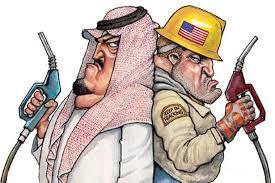It’s that time of the year again, the final OPEC+ meeting of 2019 has been scheduled and is ready to take place in December. Geopolitical tensions in the Middle East are running high and so are worries about the balance between supply and demand. The top concern, however, is whether the production cuts agreed last December will be extended or deepened once again.
Russia is, of course, in the spotlight. The world’s second-largest oil producer has made it a habit of demonstrating reluctance about any final commitment until the last moment when it agrees to cut. This time is no exception.

Russia’s Deputy Energy Minister Pavel Sorokin this week told TASS in an interview it was too early to discuss deeper cuts. The news immediately ignited the not-too-dormant worry of traders that Russia could play OPEC and leave the cuts altogether—a not too far-fetched scenario given Russian oil companies’ general negative attitude towards the cuts. If the OPEC+ events from the last three years are any indication, Russia will not leave the cuts but may well use the meeting to politically maneuver.
But it’s not just Russia. Nigeria earlier this month struck a deal with OPEC that will allow it to produce more oil even under a production cut regime. Reuters reported the news citing unnamed OPEC officials and noting that the decision was not made public. This development raises one important question: how long before other OPEC members ask for similar special treatment?
Besides Nigeria, there are at least two OPEC members that want to boost their oil production: Iraq and Libya.
- Iraq is taking part in the cuts, but grudgingly, and it shows: OPEC’s number-two exporter has consistently failed to stay within its production quota. Yet overall compliance continues to excel because of the forced production declines in sanction-stricken Venezuela and Iran.
So, the obvious question is how long and how much OPEC+ will decide to cut. But there’s a less obvious one that was put forward by Bloomberg’s Julian Lee: why cut at all instead of turning the taps all the way back to maximum production?
Lee argued in a recent commentary that Saudi Arabia, for one, would benefit a lot more from a maximum-production approach than an extension of the cuts. U.S. shale oil growth is already slowing down because of international prices. If Saudi Arabia and its allies decide to reverse their price control approach, it will crash and burn.
Of course, as prices crash so will the Saudi dream of a $2-trillion valuation for Aramco, whose IPO is reportedly scheduled for a couple of days after the OPEC+ meeting. This means the otherwise perfectly reasonable scenario put forth by Lee and others is unlikely to play out. What is most likely to happen is either a preservation of the status quo or an agreement to extend the current cuts further into 2020.
No comments:
Post a Comment
Note: Only a member of this blog may post a comment.